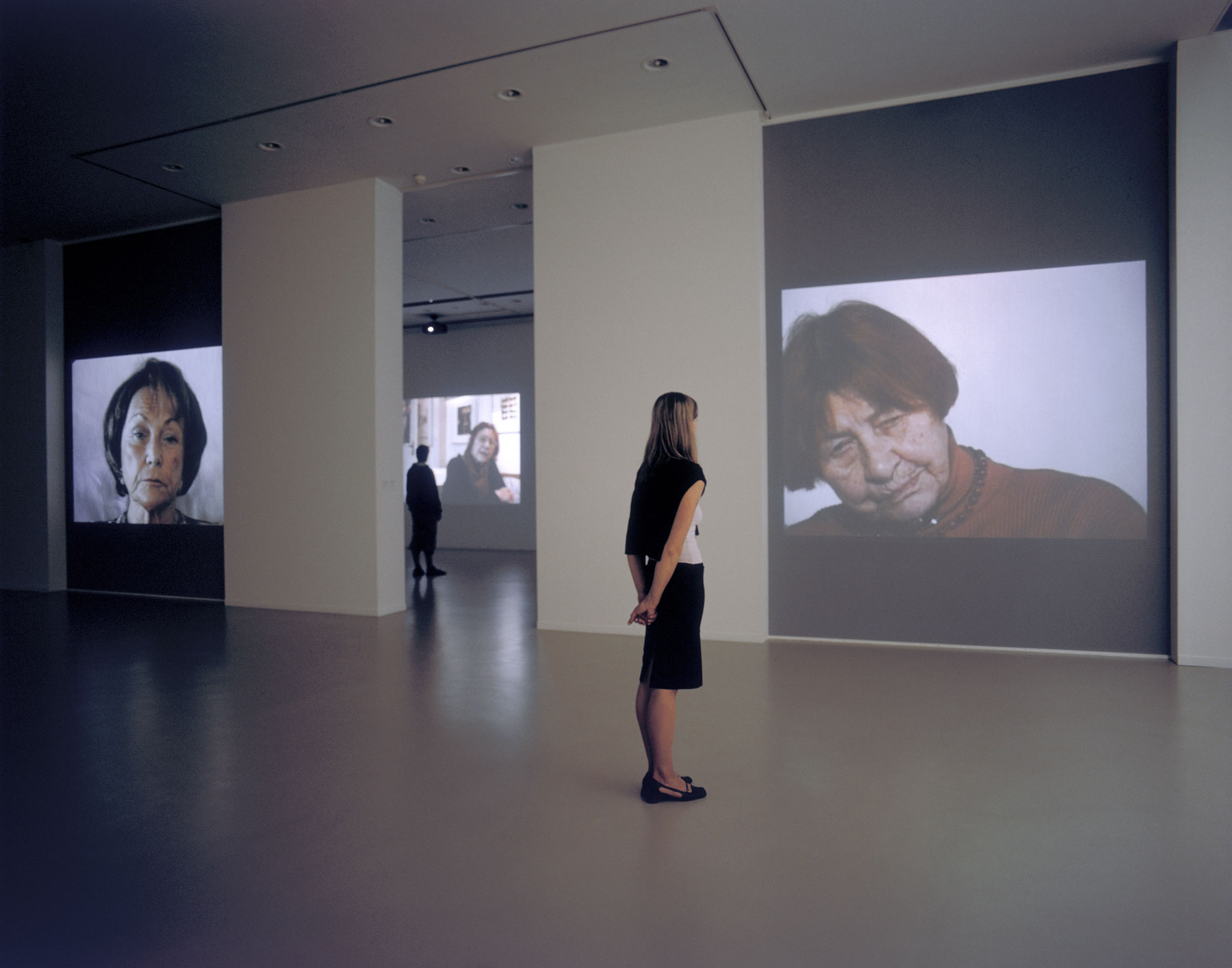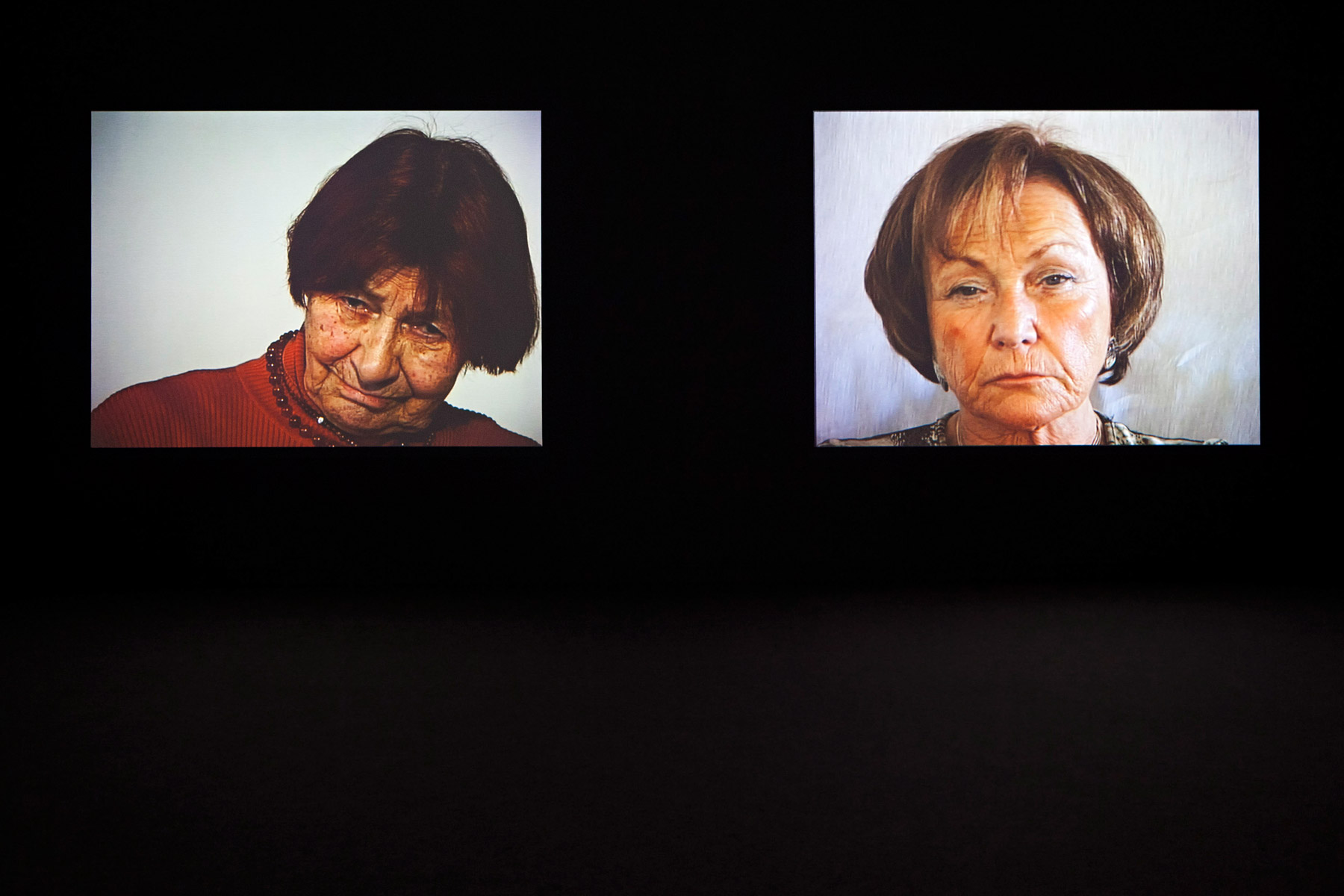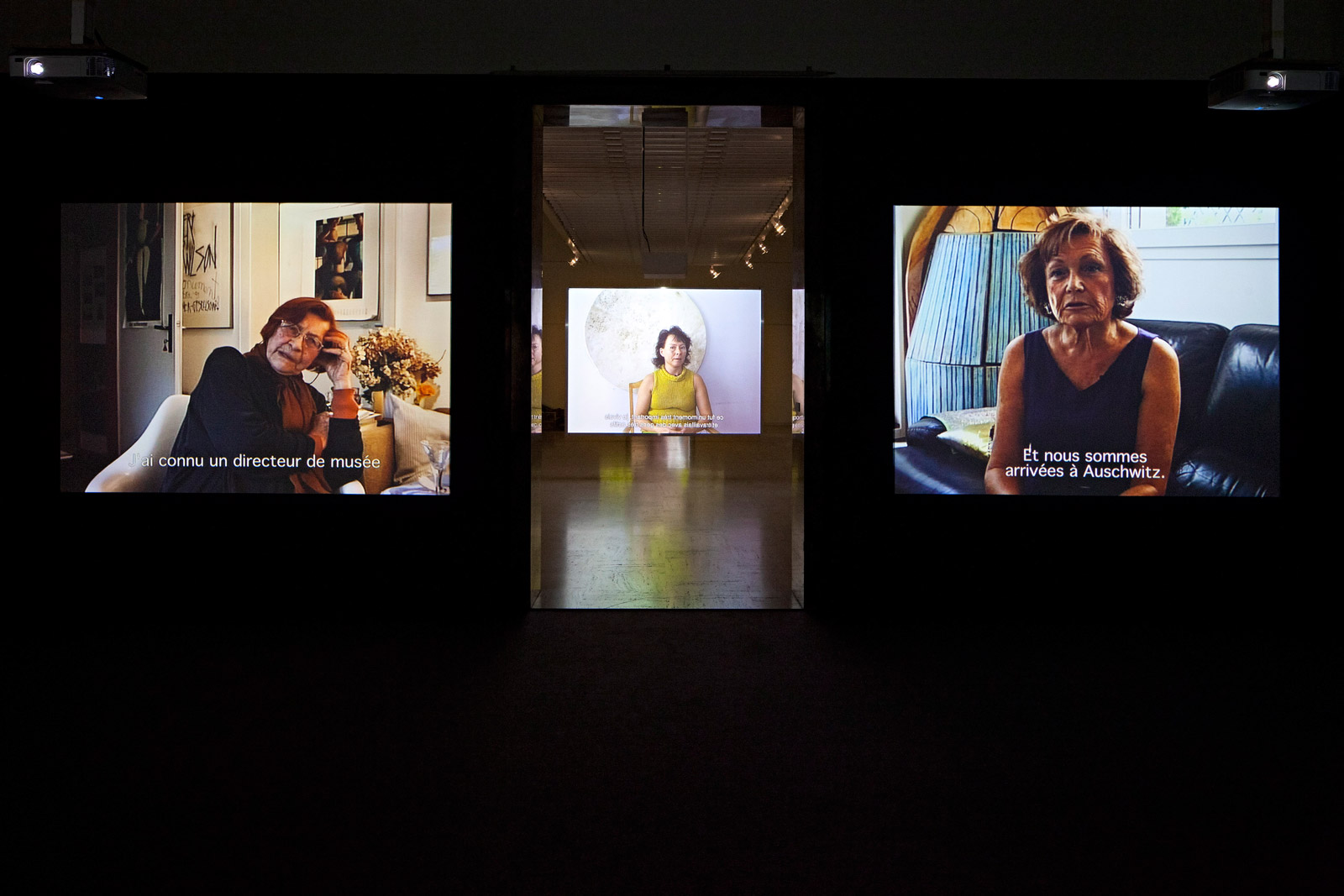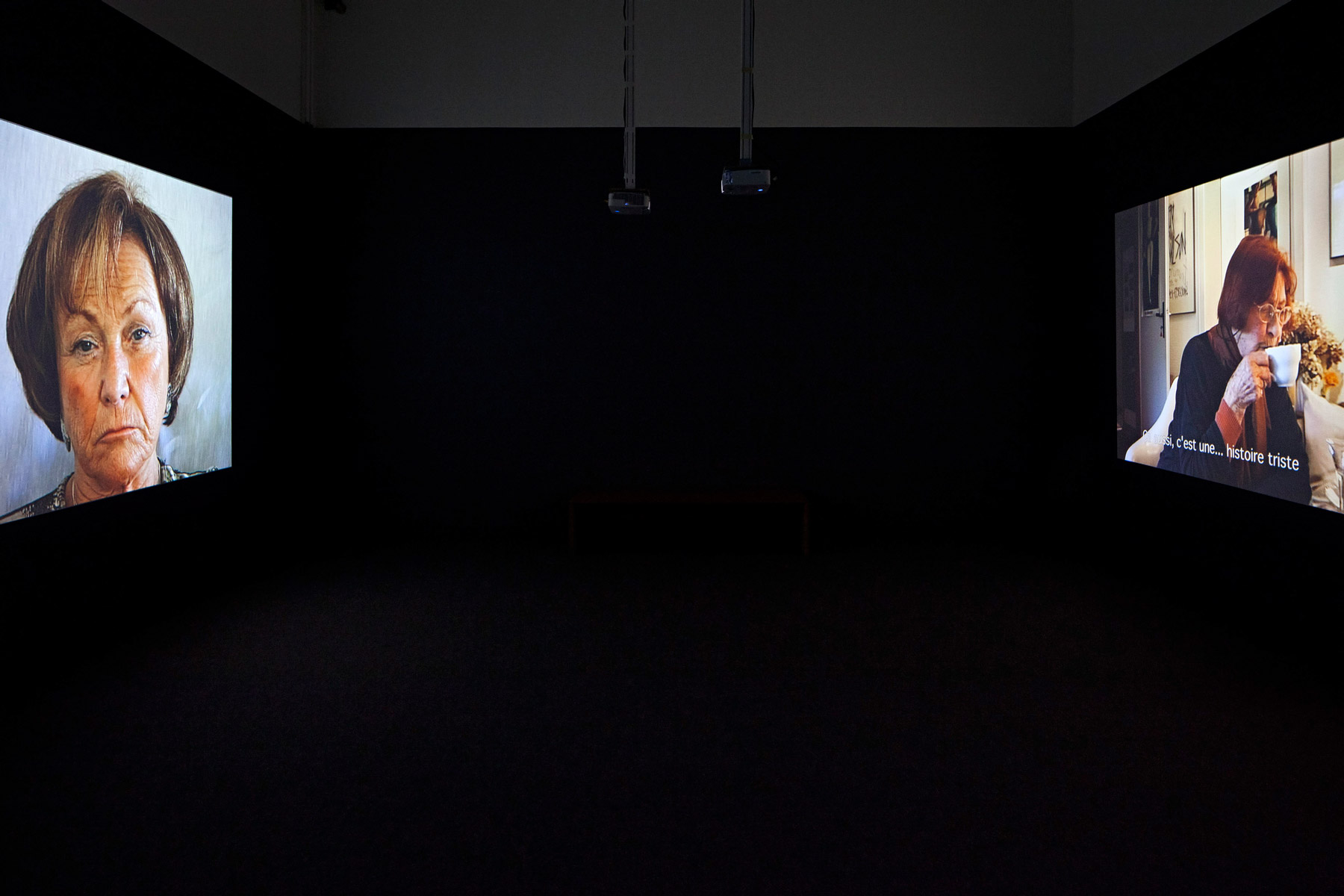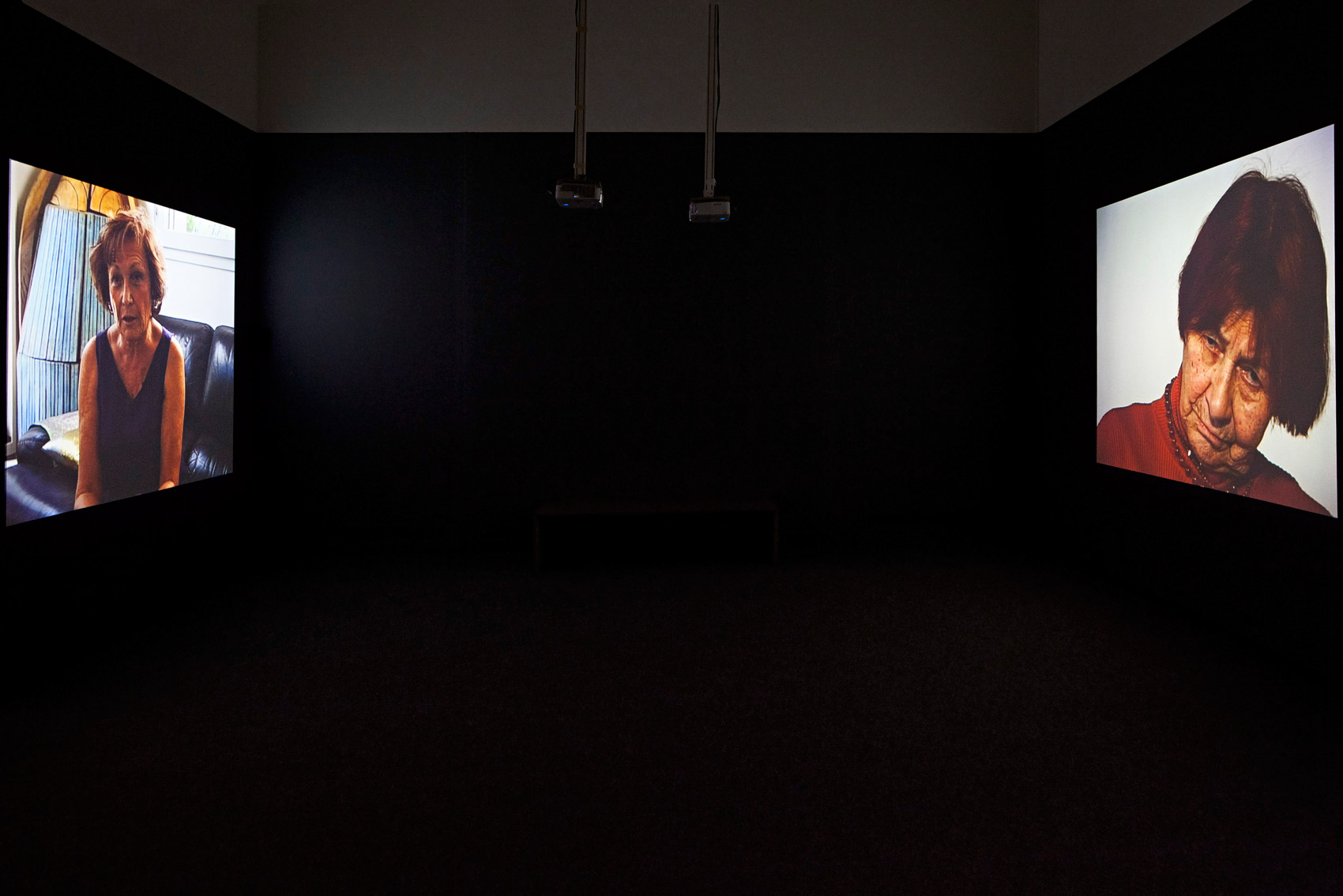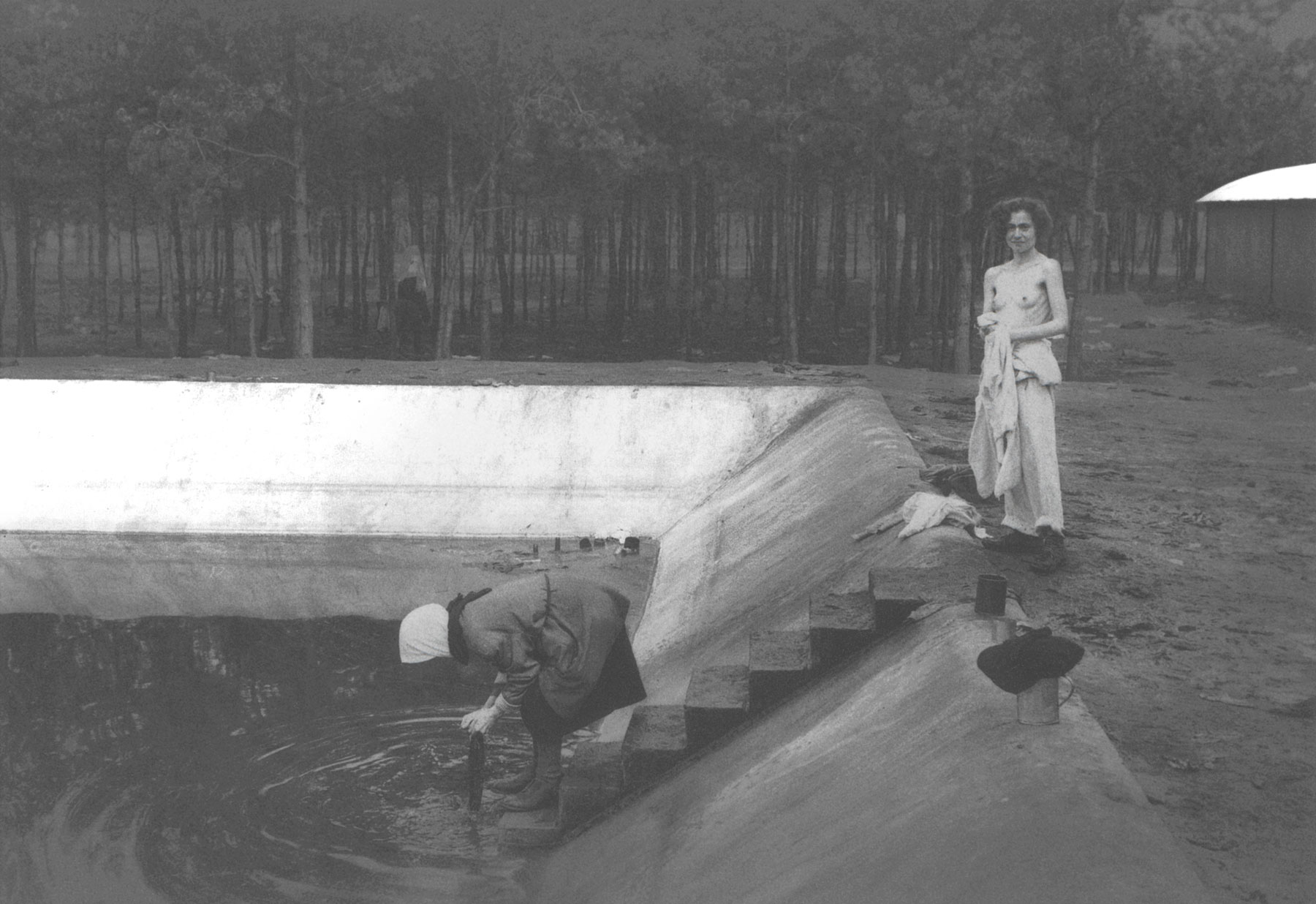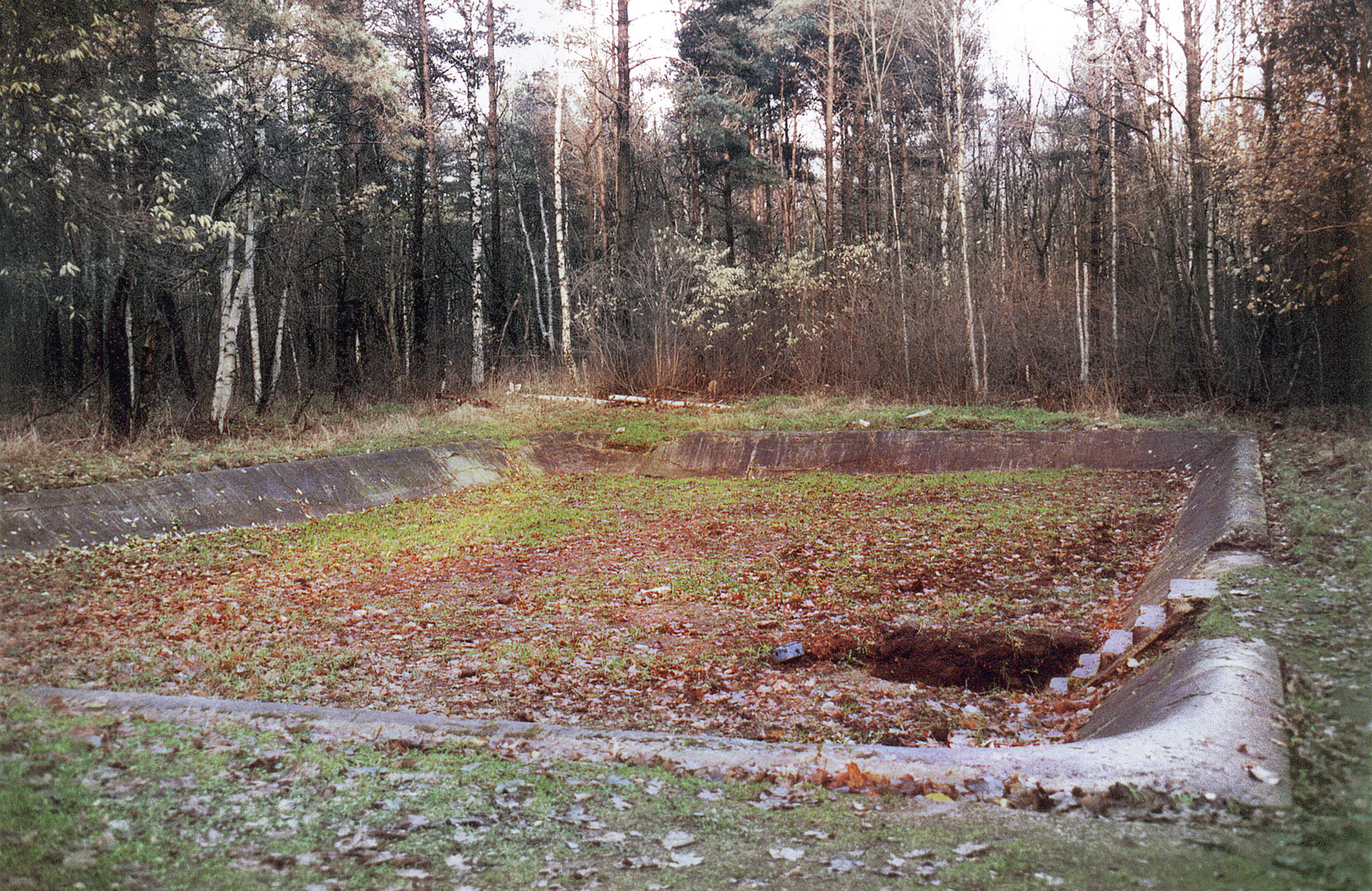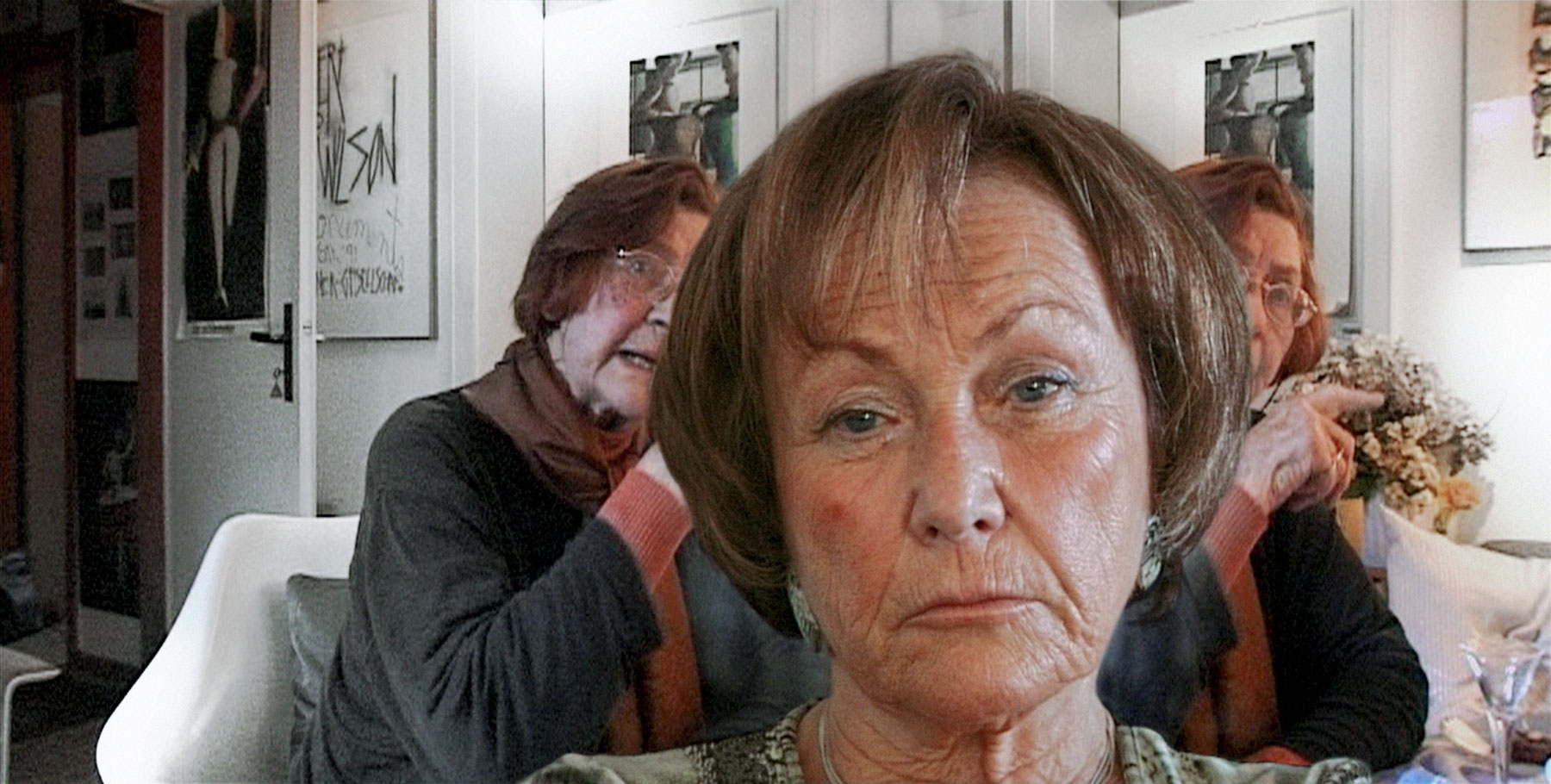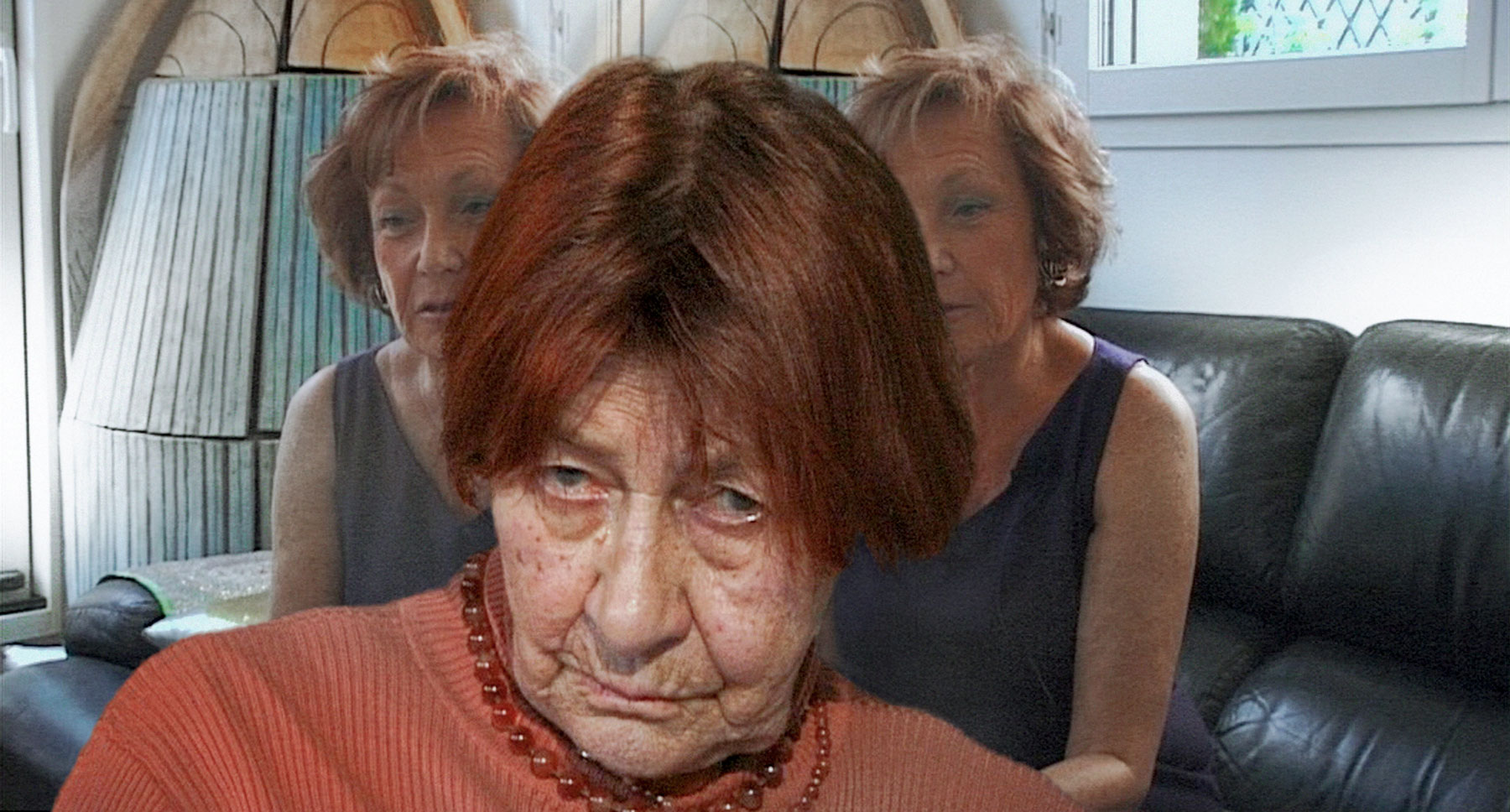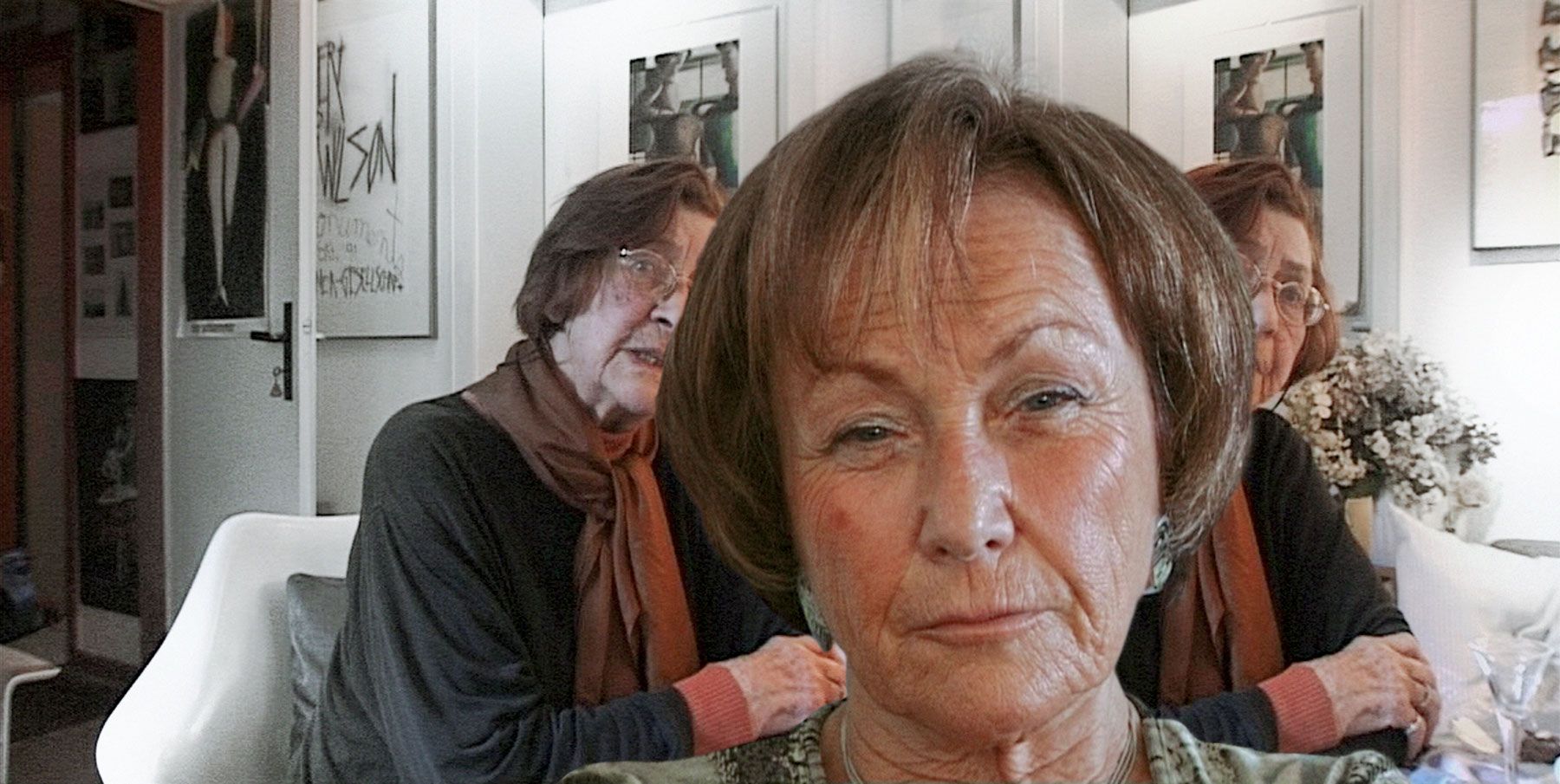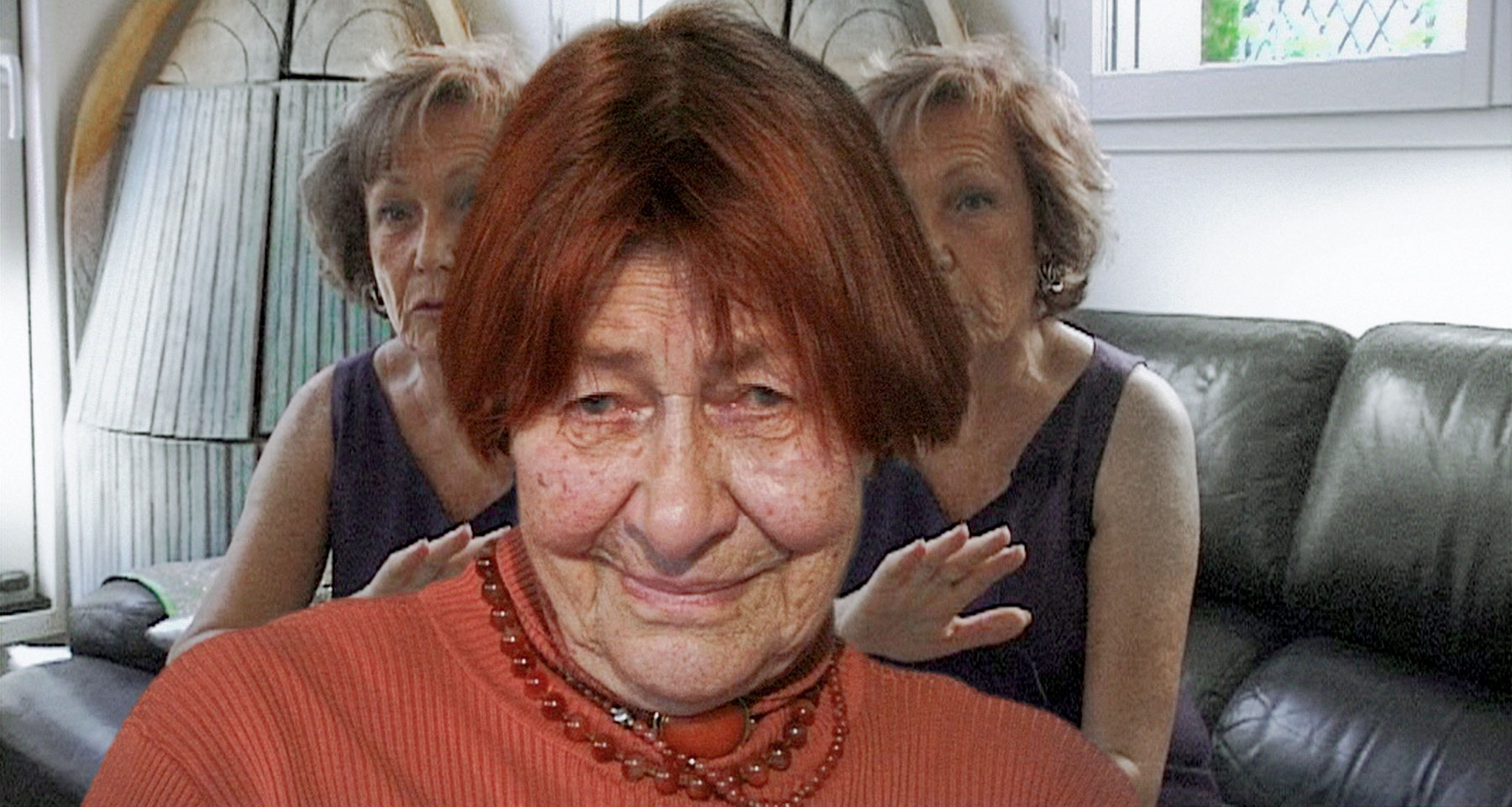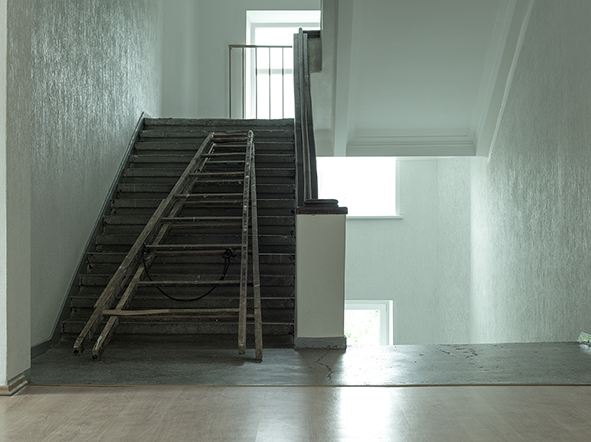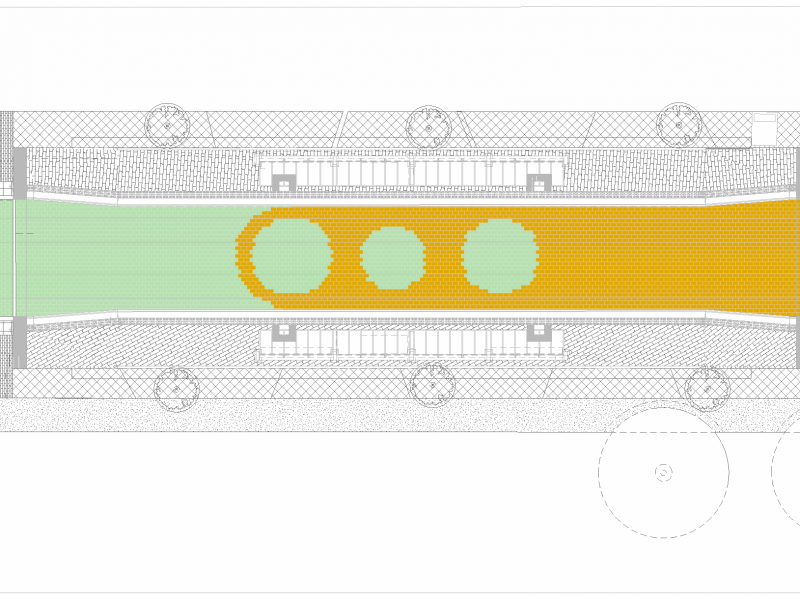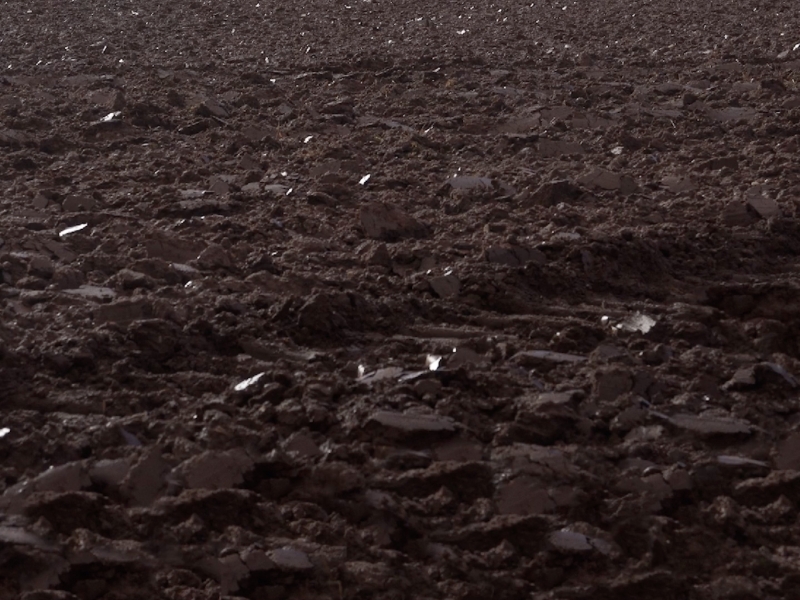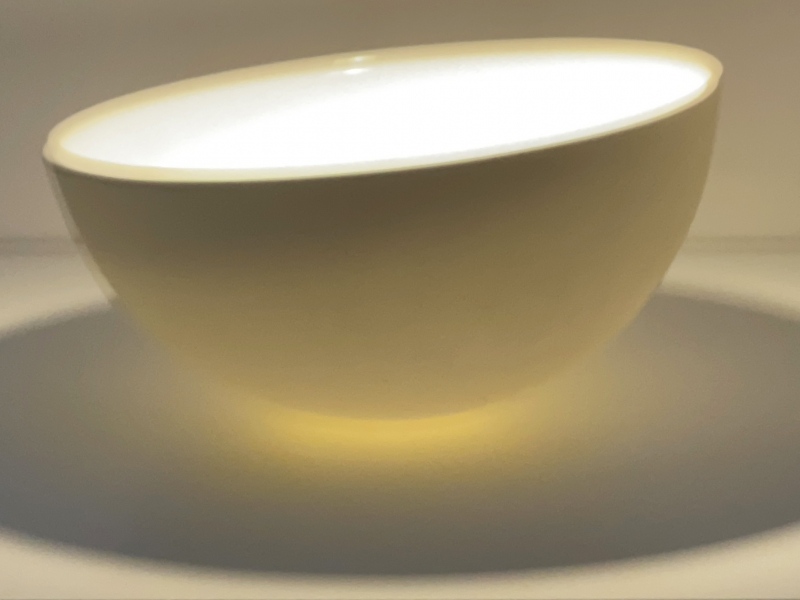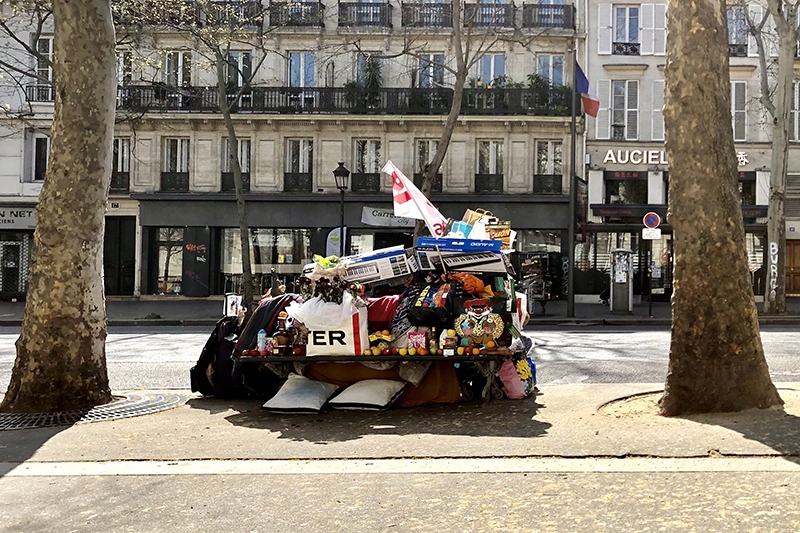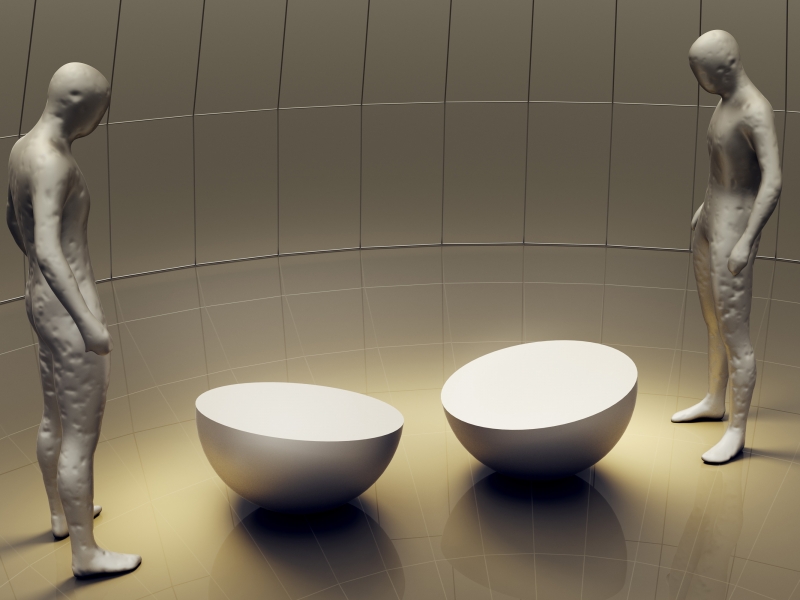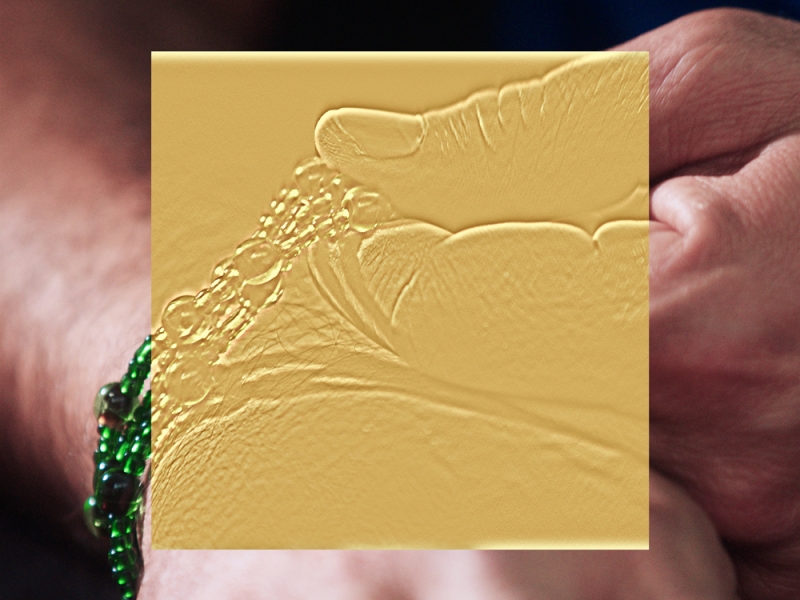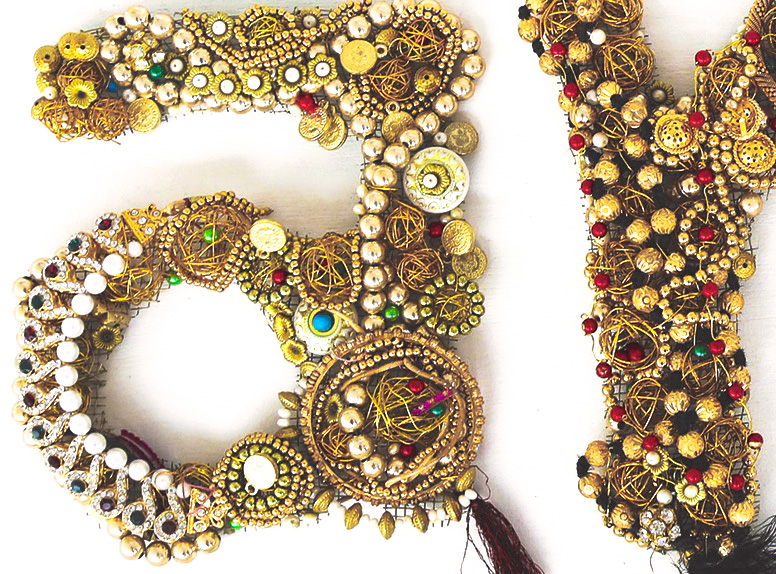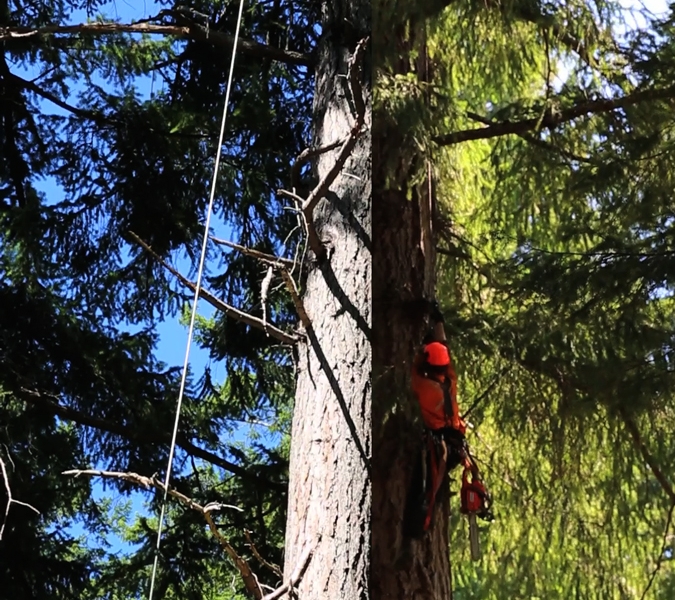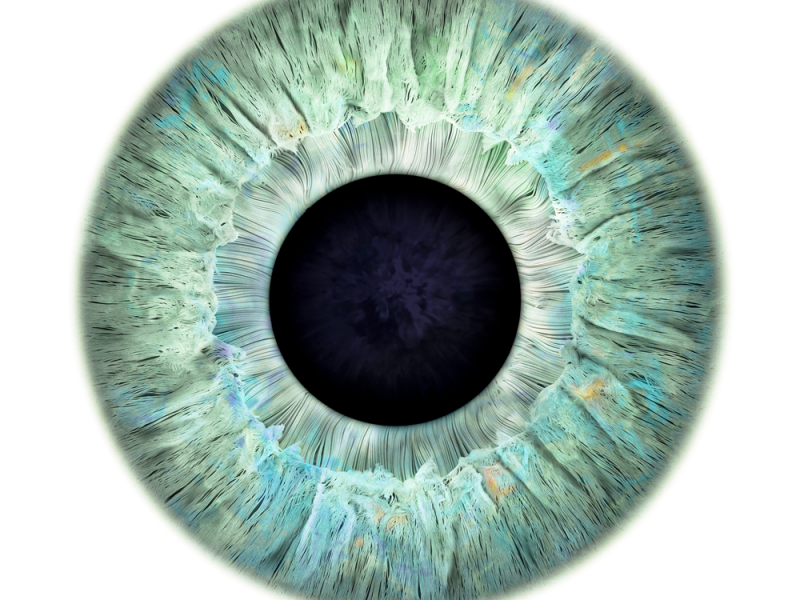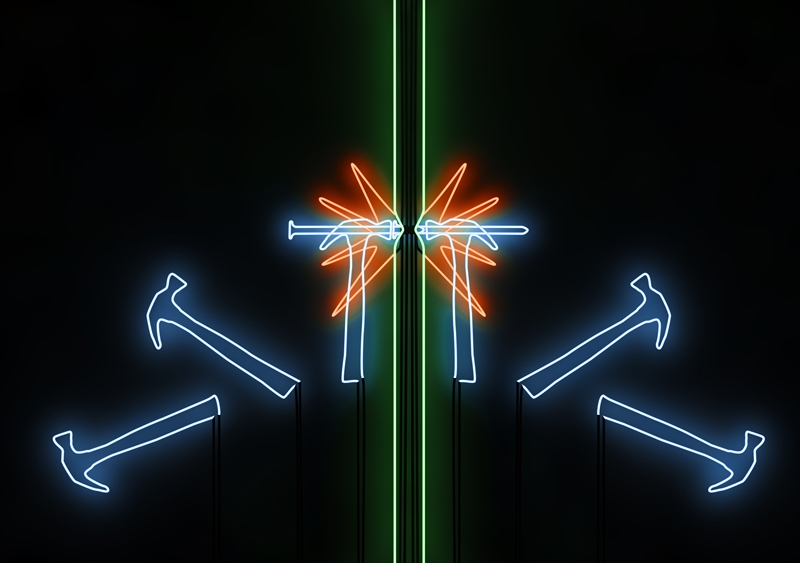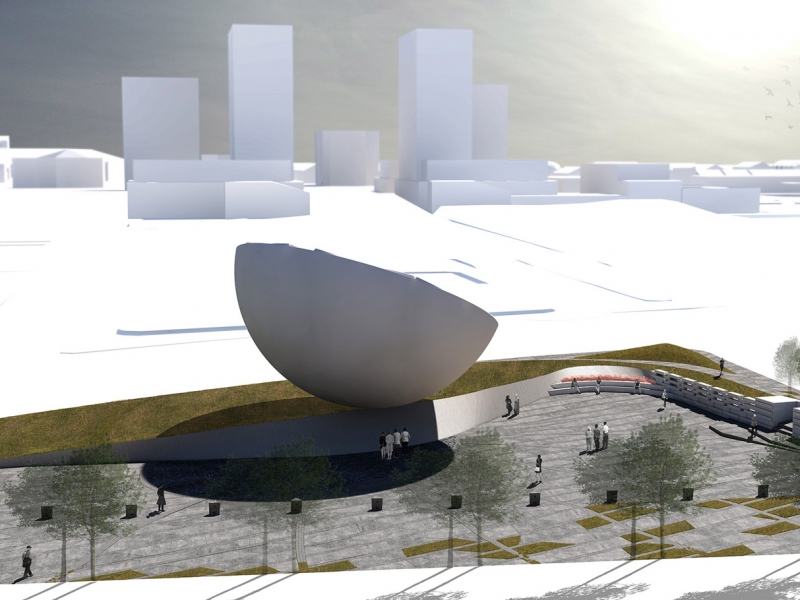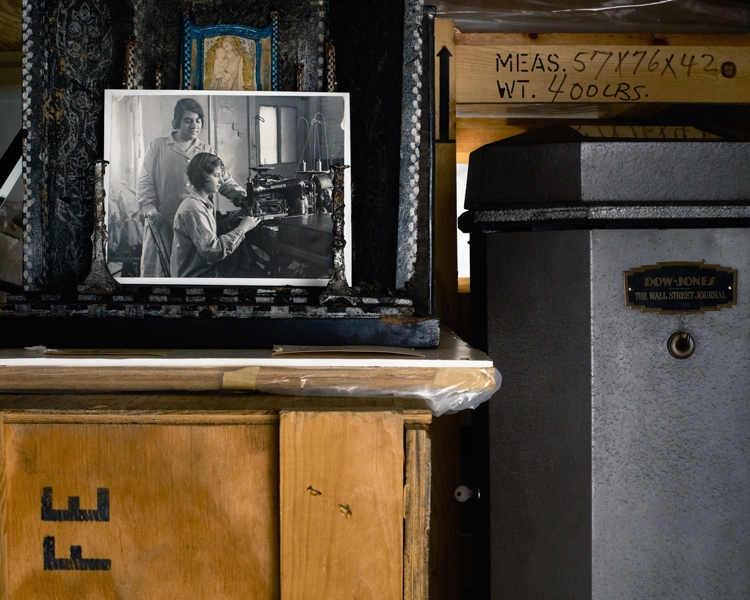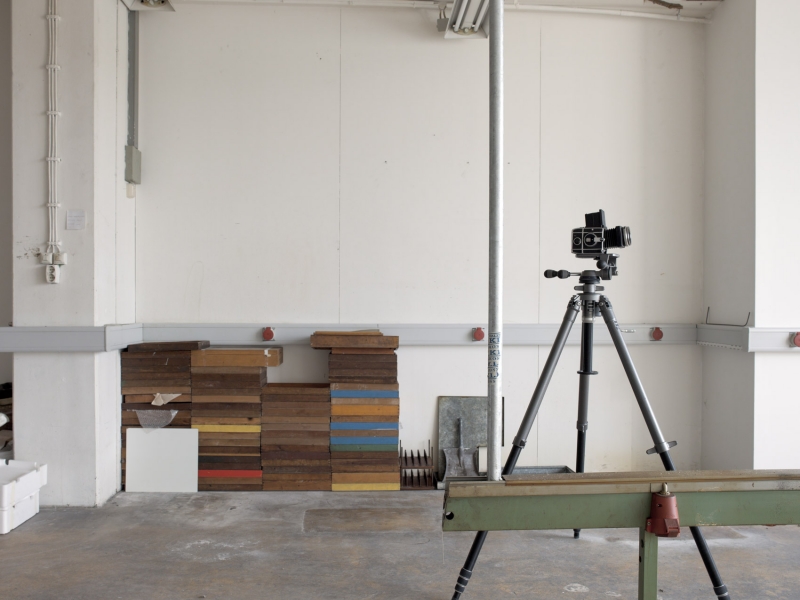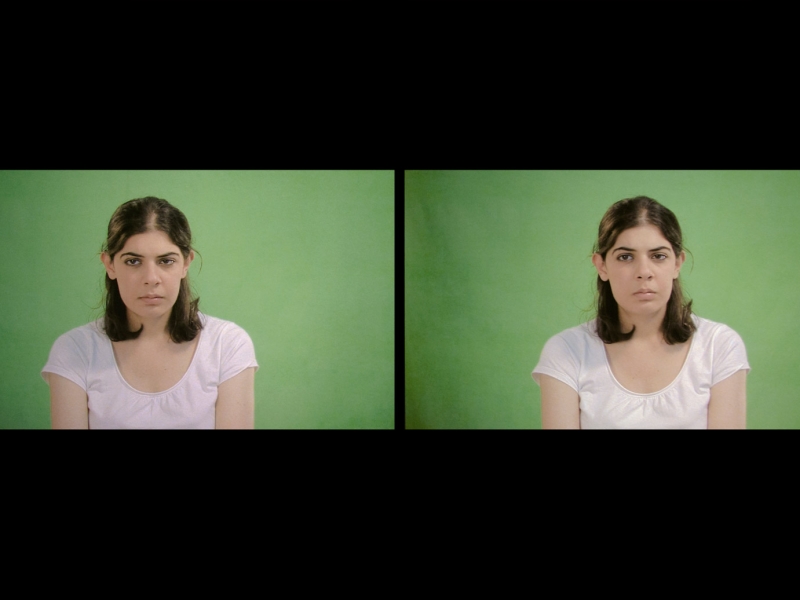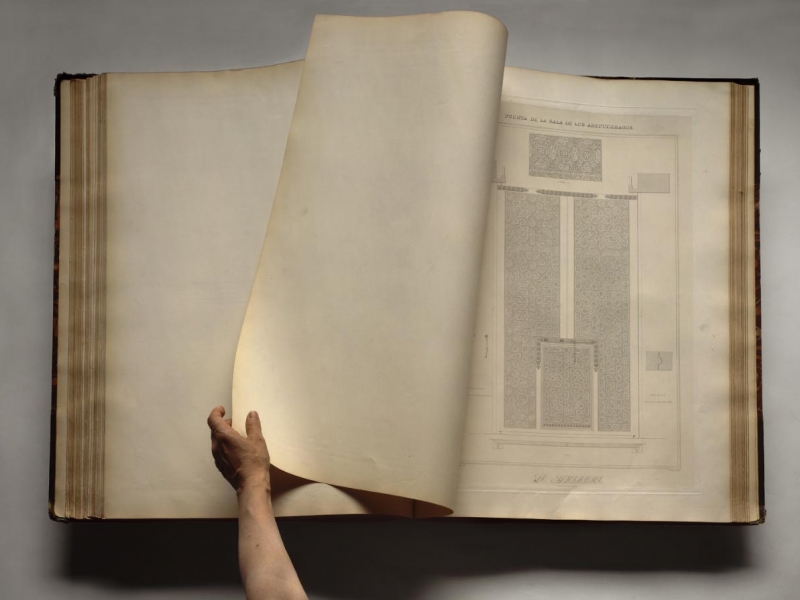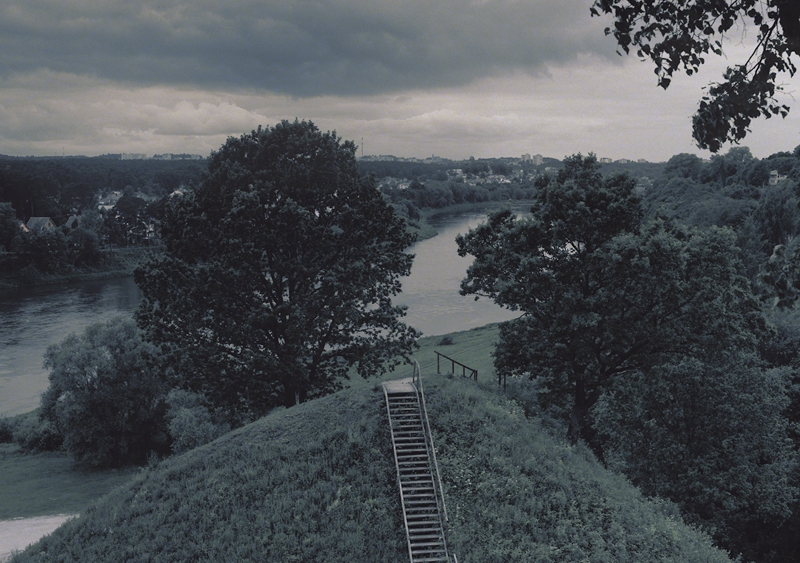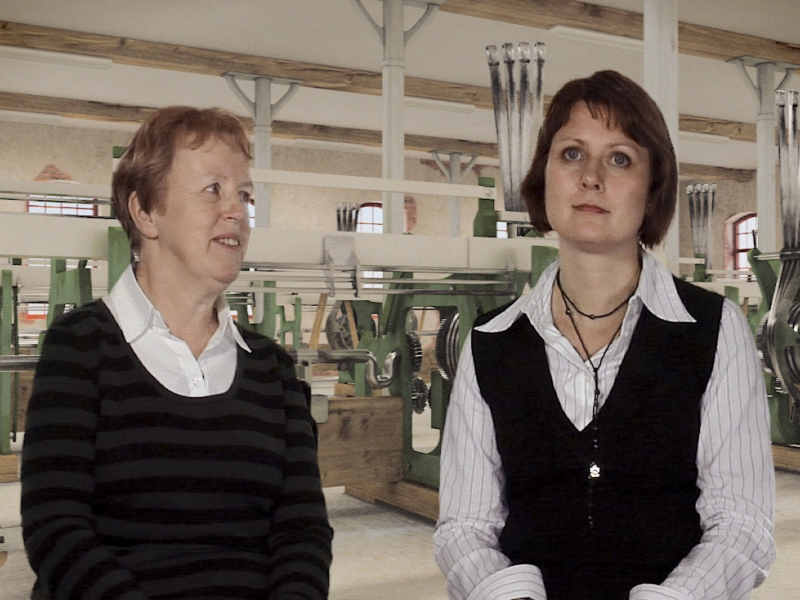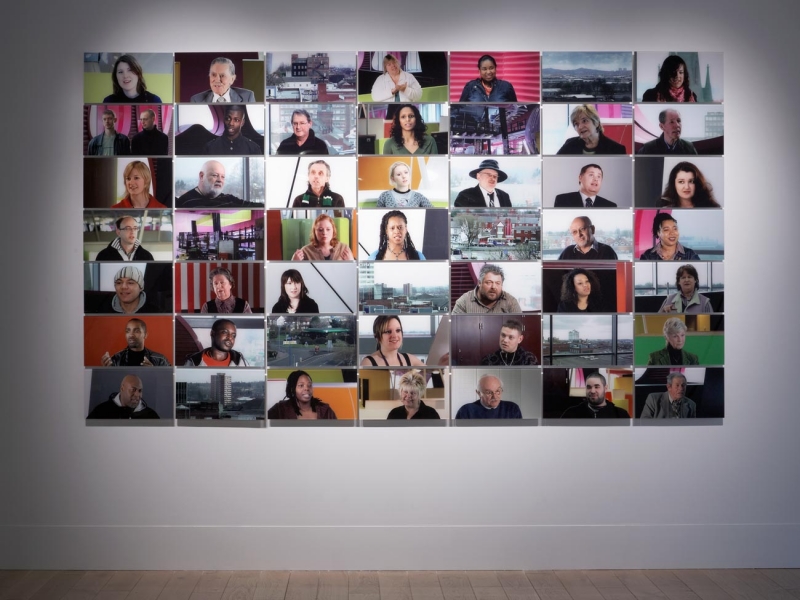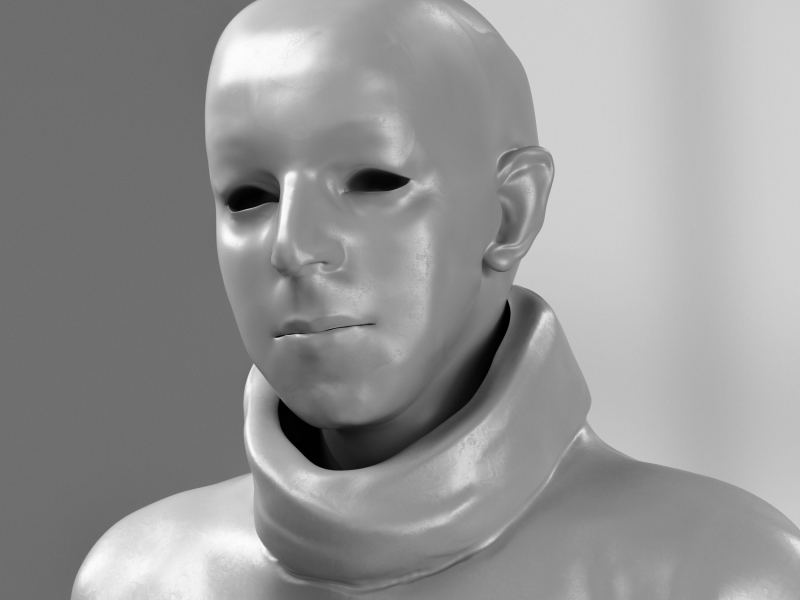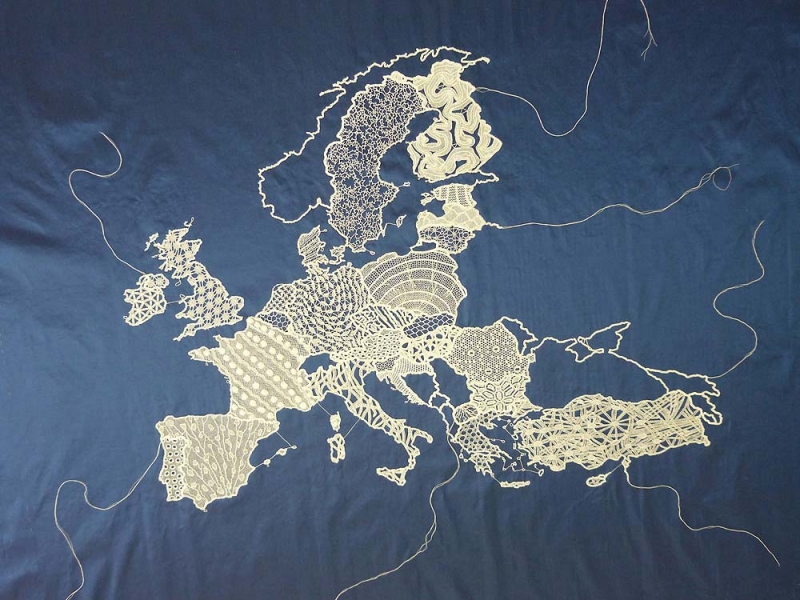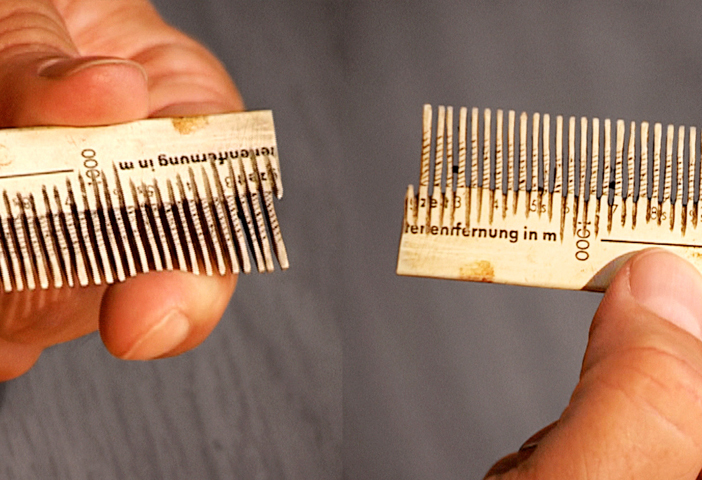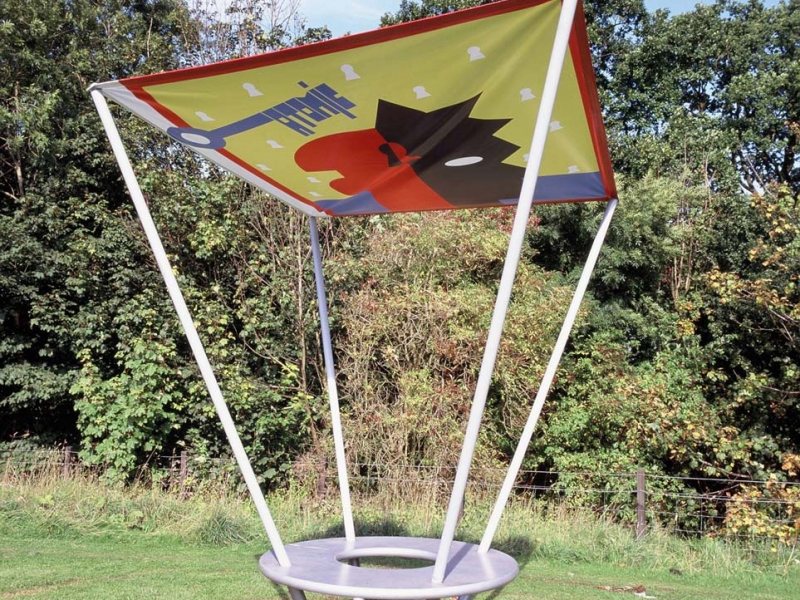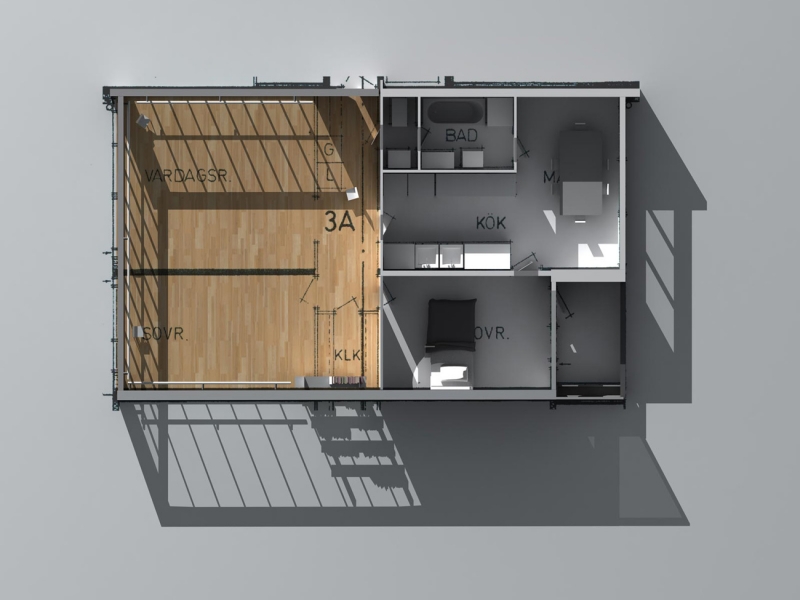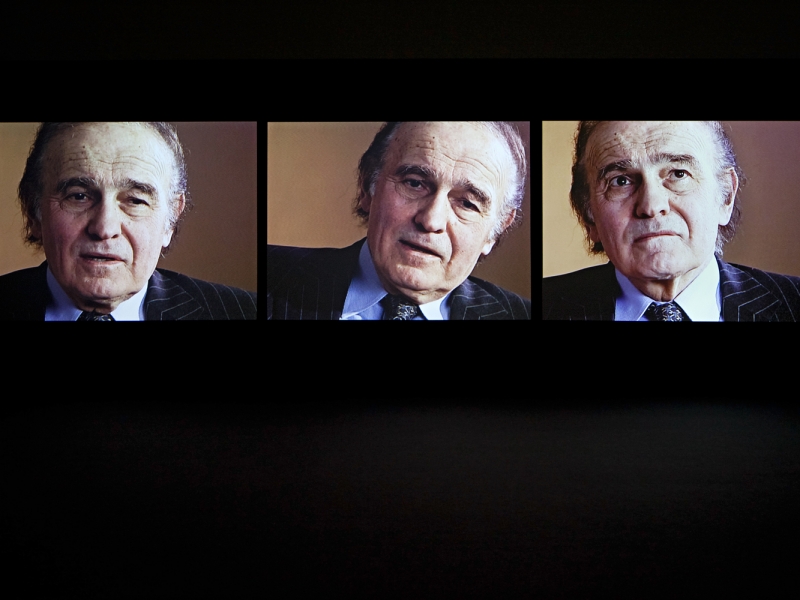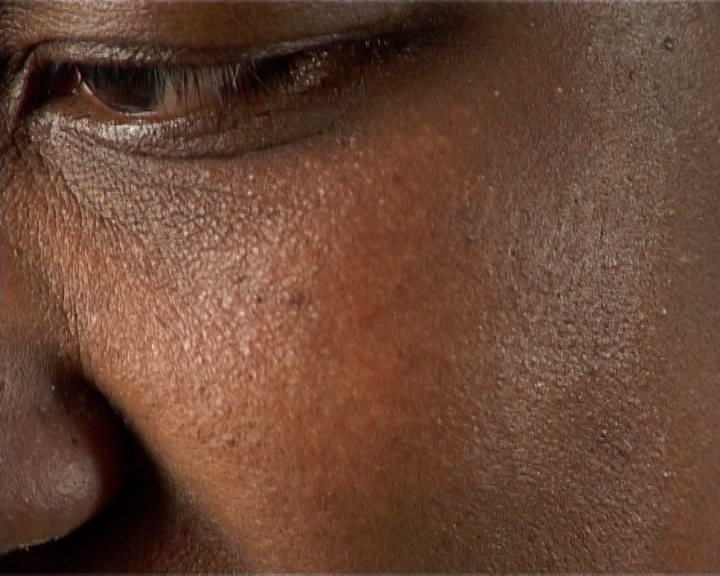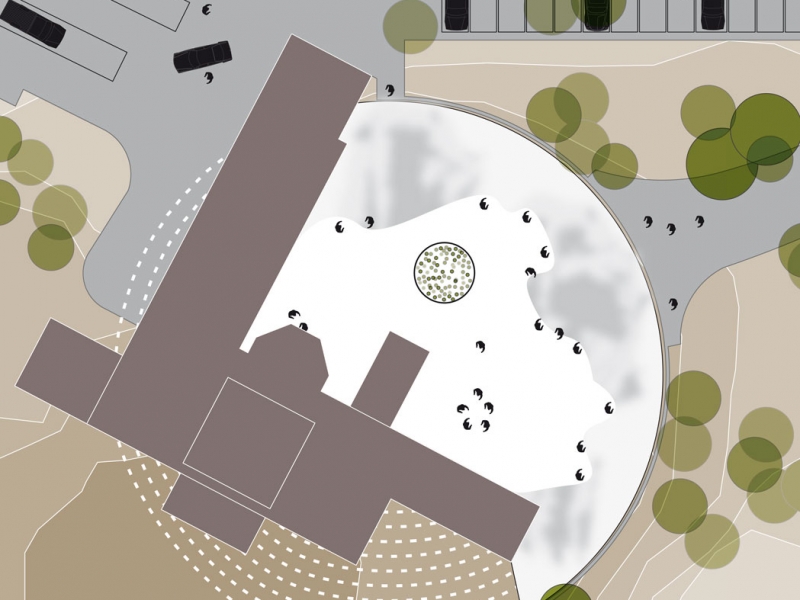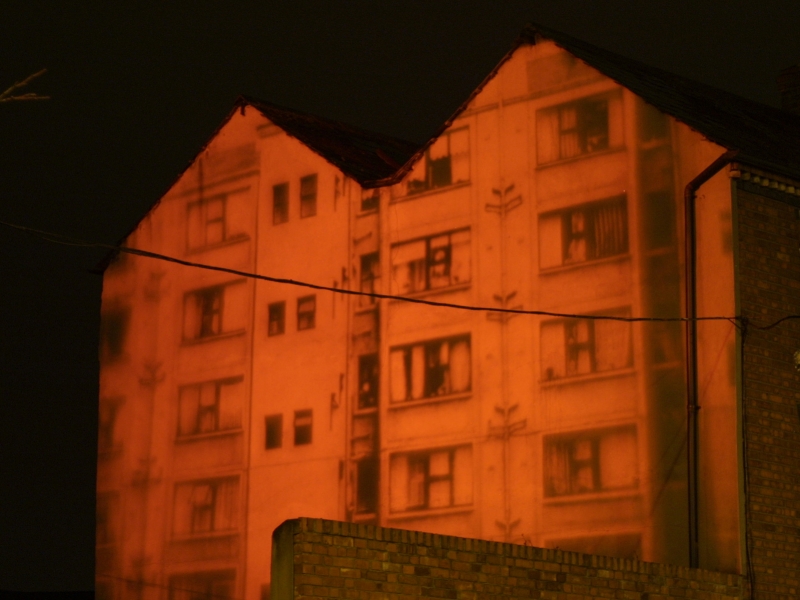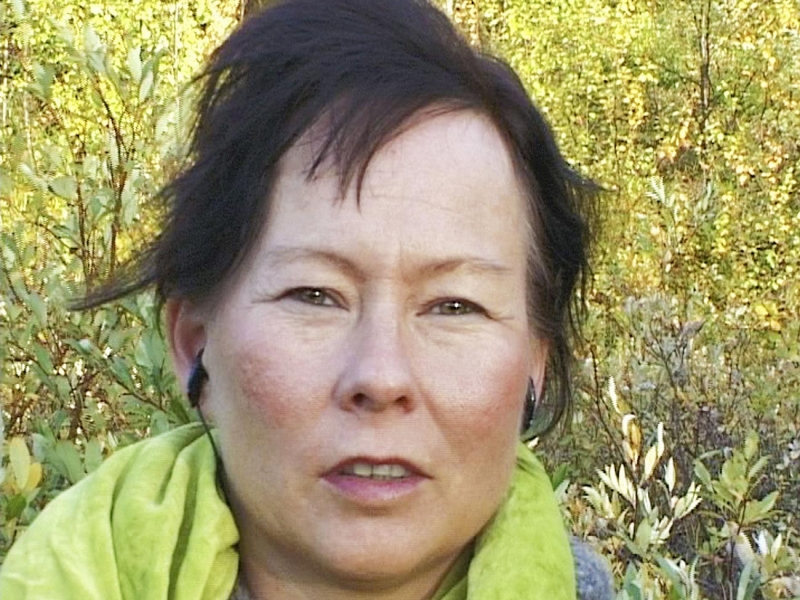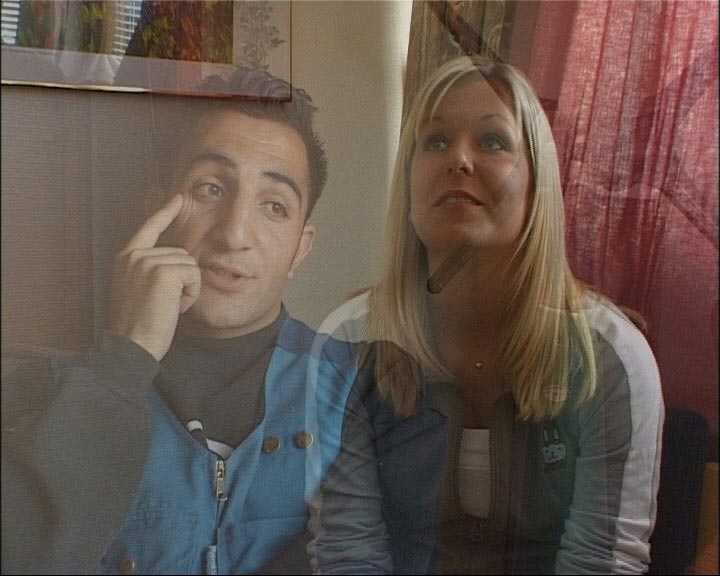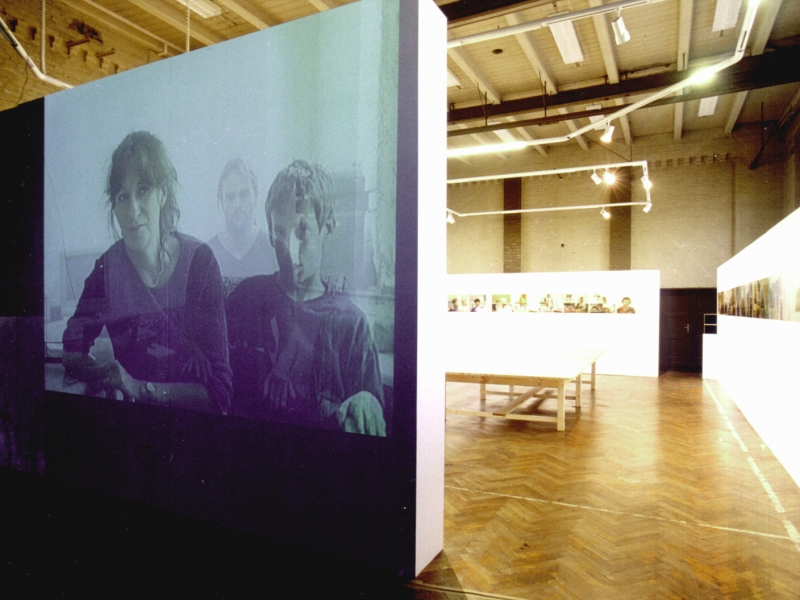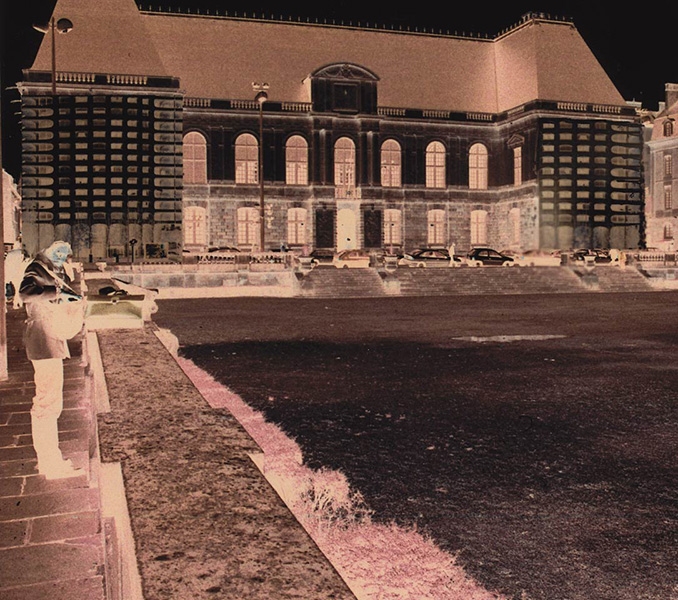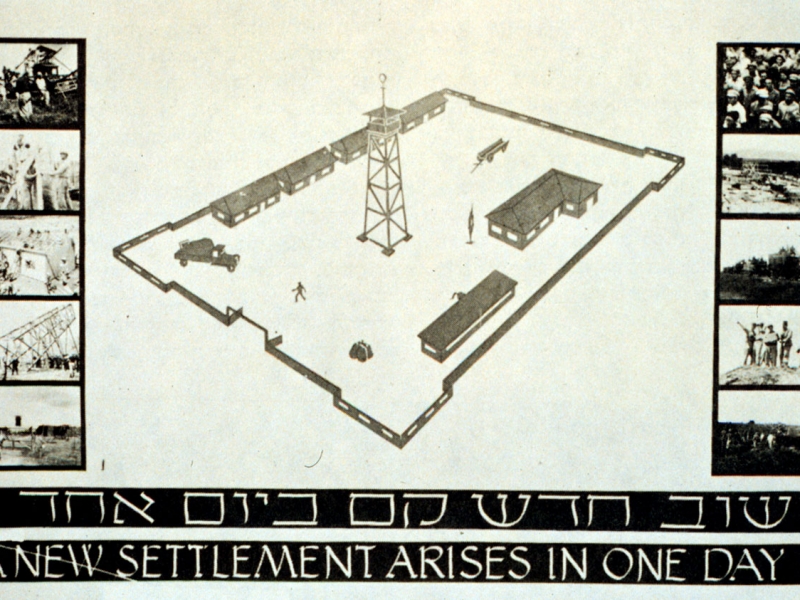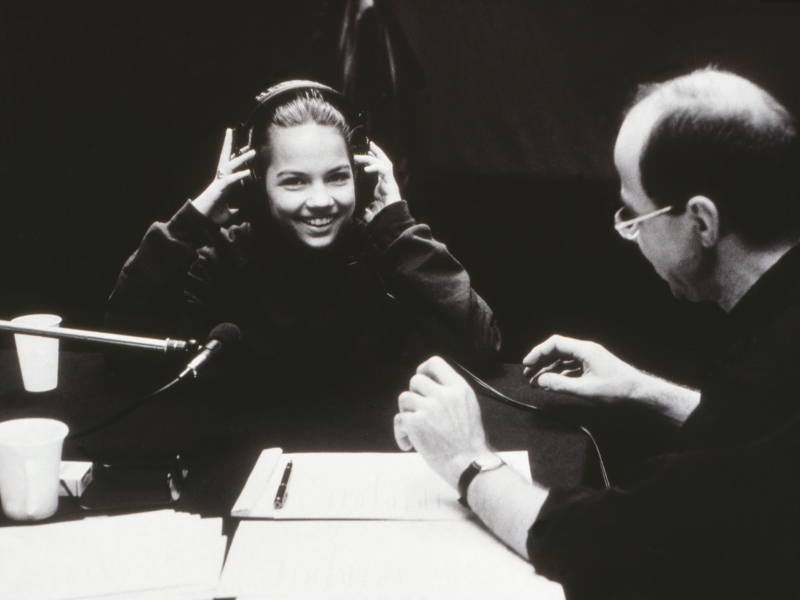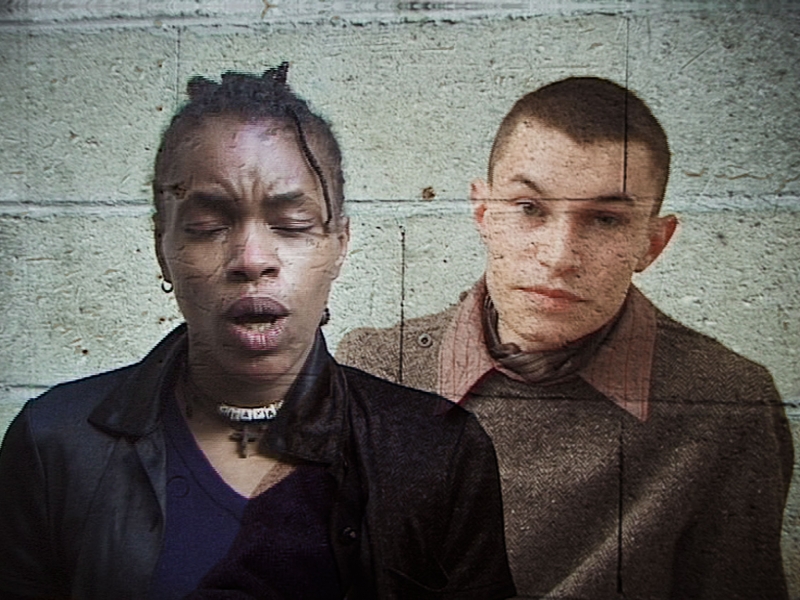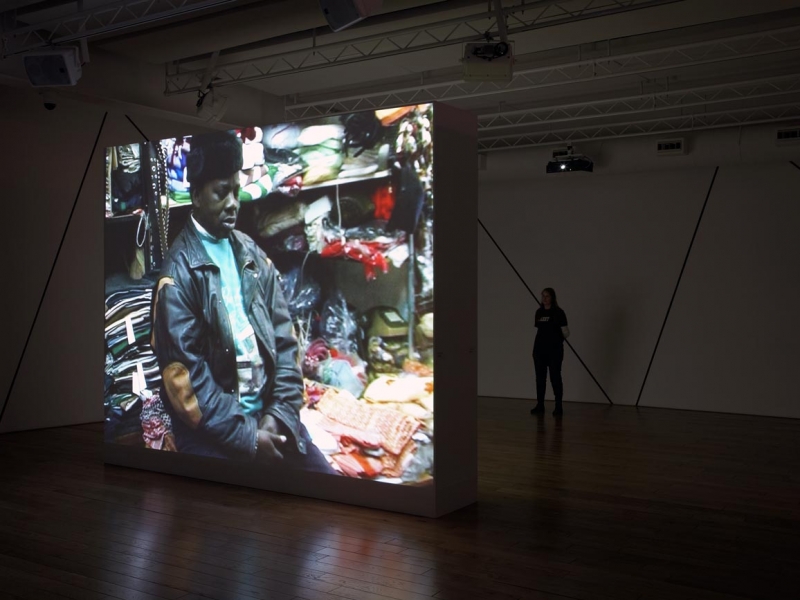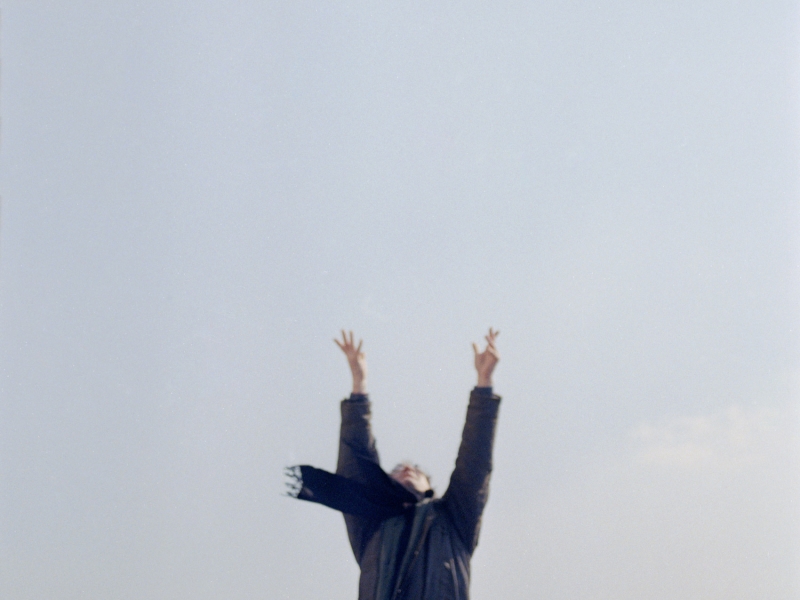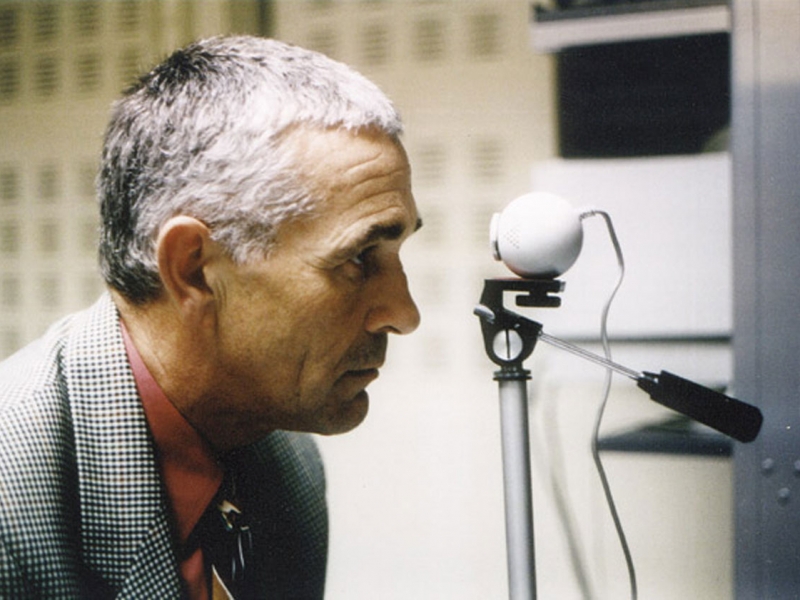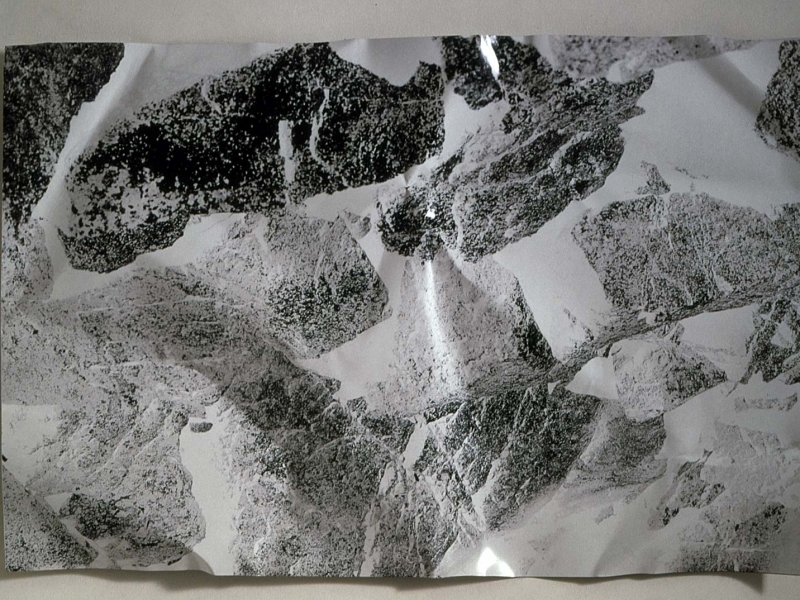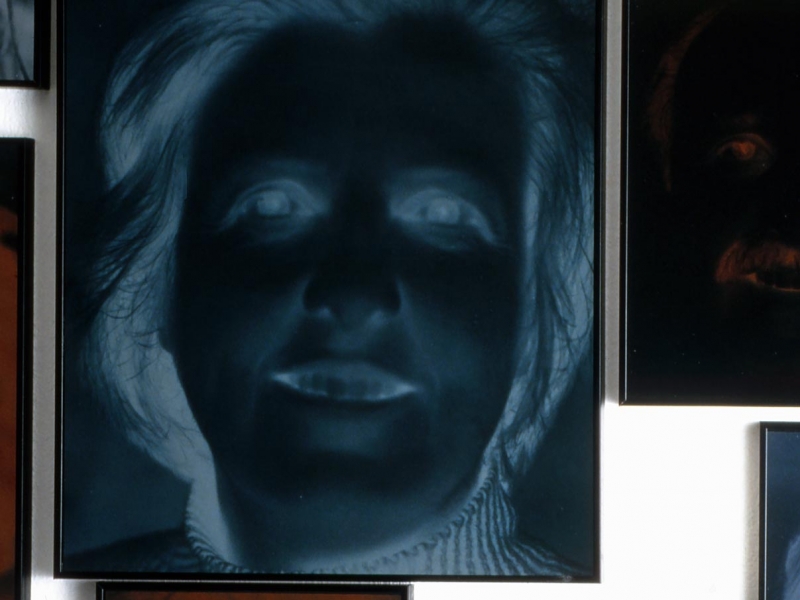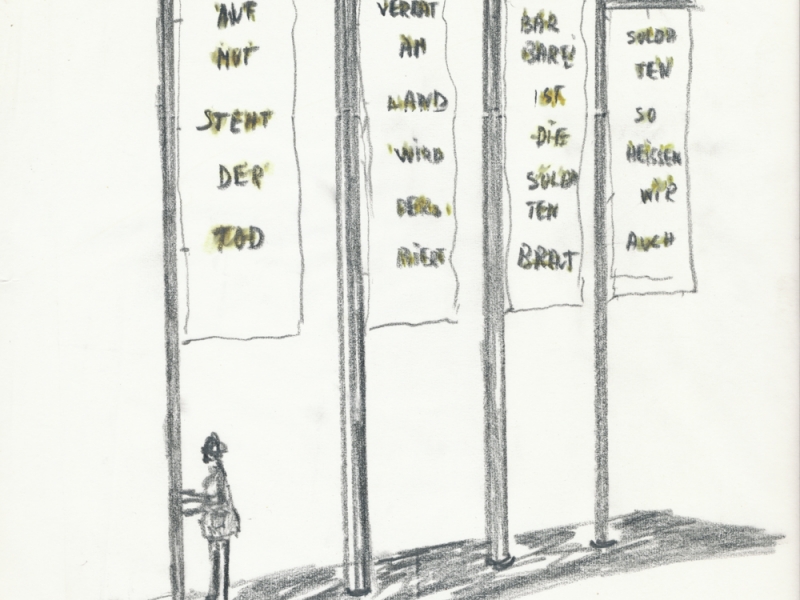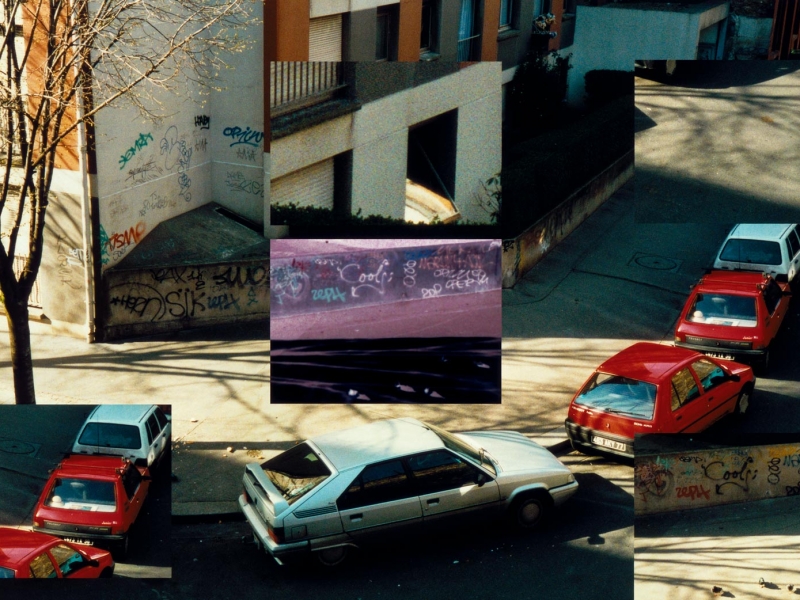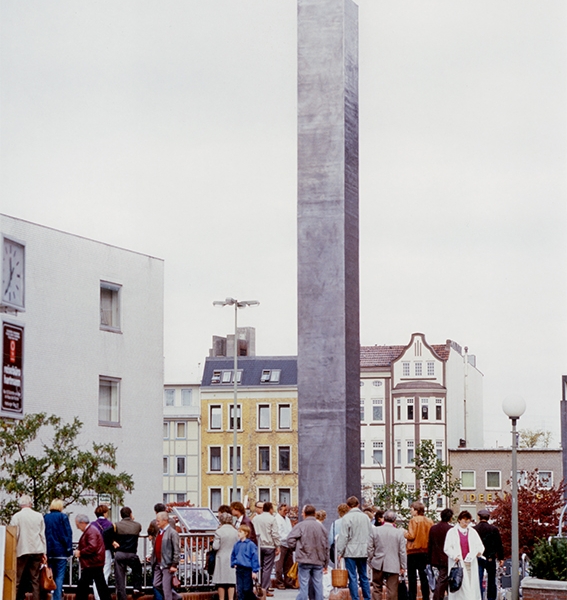DOES YOUR IMAGE REFLECT ME?
2002
Hanover, Germany
Installation
4 video projections – 38 min, 11 diasec-mounted colour photographs 8 – 40 cm x 90 cm, 3 – 100 cm x 150 cm and 1 serigraph – 74 cm x 100 cm
In 2002 Esther Shalev-Gerz was commissioned to produce an exhibition at the Sprengel Museum in Hanover, Germany. She invited two elderly women to participate in a work that would investigate the territory between telling and listening to reveal how individual histories and testimonies, from different perspectives, co-exist to challenge, affirm and integrate divergent forms of testimony.
Shalev-Gerz videoed a German woman, who based in Hanover during WW II was then only 40 kilometres from the Bergen-Belsen concentration camp and a Polish Jewish woman who survived this concentration camp. In producing Does Your Image Reflect Me? Shalev-Gerz initially videoed each woman recounting her life before, during and after the war. Travelling between the two subjects, using their domestic televisions, she supported each woman to witness the other’s account. The experience of witnessing the other’s testimony was then captured by Shalev-Gerz’s camera.
In the museum, four screens were installed. Side by side were the projections of the women telling their story, each of them was faced with the projection of the other’s listening.
EST-CE QUE TON IMAGE ME REGARDE ?
2002
Hanovre, Allemagne
Installation
4 projections vidéos, 38min, 11 photographies en couleur montées sous diasec, dont 8 : 40 x 90 cm et 3 : 100 x 150 cm et 1 sérigraphie, 74 x 100 cm
En 2002 le Sprengel Museum d’Hanovre invita Esther Shalev-Gerz à réaliser une nouvelle oeuvre. Afin de mettre en question, d’établir et d’intégrer des formes de témoignage divergentes, elle invita à son tour deux femmes à participer à un travail explorant le territoire entre l’écoute et la parole afin de mettre en évidence la façon dont coexistent des histoires et des témoignages individuels formulés à partir de différentes perspectives.
Shalev-Gerz a d’abord filmé une femme allemande qui vivait durant la seconde guerre mondiale à Hanovre, à seulement 40 Km du camp de concentration de Bergen-Belsen, puis une femme juive polonaise qui a survécu à son passage dans ce même camp. Les deux femmes racontent séparément leur vie avant, pendant et après la guerre. Puis l’artiste montrait aux deux protagonistes, dans leurs domiciles et sur leurs télévisions, ce qu’elle avait filmé auparavant. Cette expérience d’être témoin du récit de l’autre est captée à son tour par la caméra d’Esther Shalev-Gerz.
Dans le musée, quatre écrans été installés. Les deux projections des récits se trouvaient côte-à-côte. En face de chacune d’elles était projetée la vidéo l’autre écoutant le récit.


